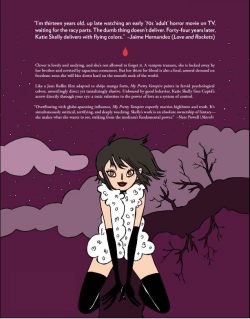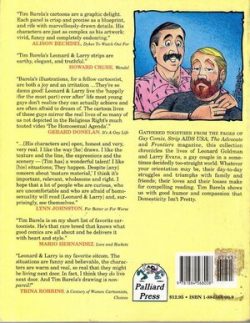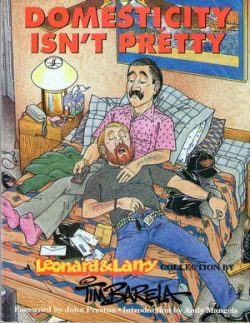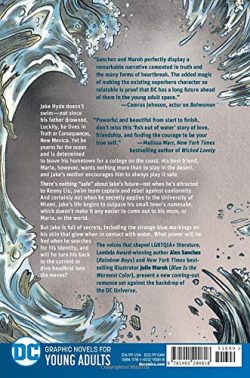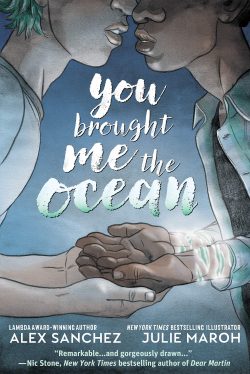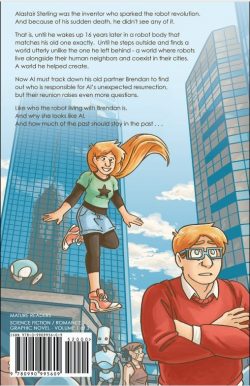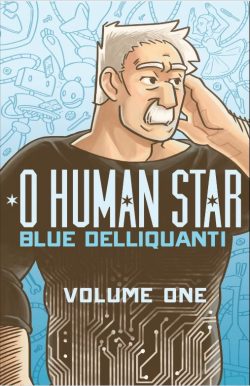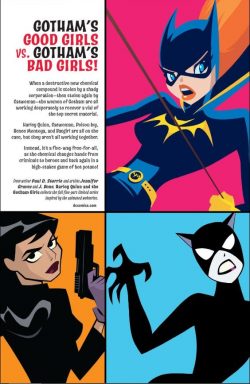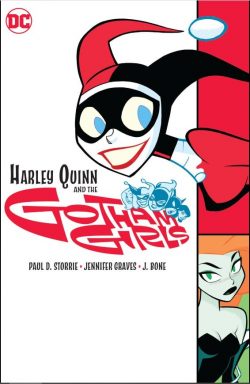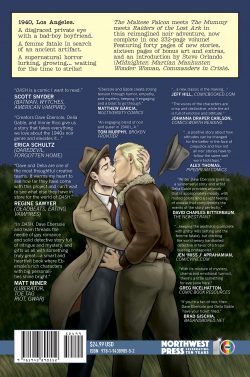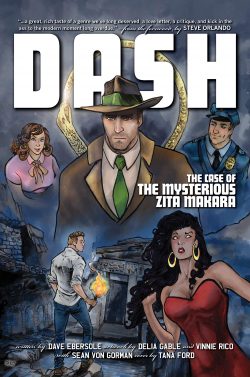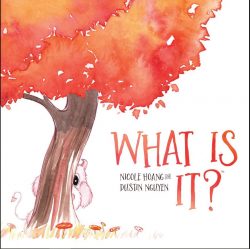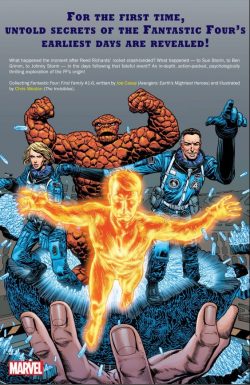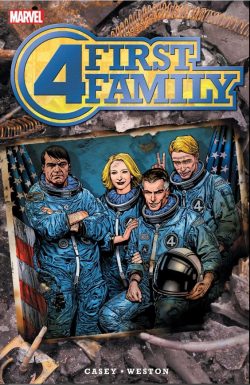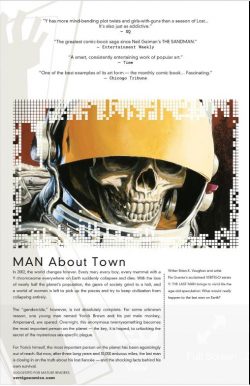

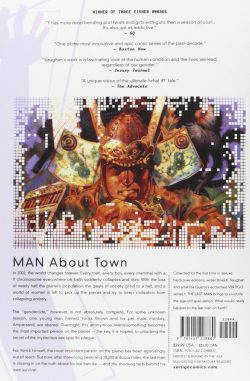
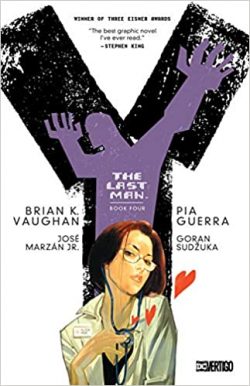
By Brian K. Vaughan, Pia Guerra, Goran Sudžuka, José Marzán Jr. & various (DC/Vertigo)
ISBN: 978-1-4012-2888-0 (HB) 978-1-4012-6168-9 (TPB)
Back in 2002, an old, venerable and cherished science fiction concept got a smart and satirical updating in Vertigo comic book series Y: The Last Man. These days it’s more relevant than ever as the premise explores the aftermath and consequences of a virulent global plague.
Fresh, pithy and wry, the Vertigo Comics version begins with a mystery plague destroying every male mammal on Earth, along with all the foetuses.
If it had a Y chromosome it croaked, except, somehow, for college-boy slacker and amateur escapologist Yorick Brown – and his pet monkey Ampersand. One night the guy goes to bed pining for his absent girlfriend Beth DeVille (an anthropology grad on a dig in Australia) and the next day Ampersand is the only male animal on Earth and he’s the last man alive…
Yorick’s mum, part of the new (for which read Still Standing after a failed power-grab by the assembled widows of Republican Congressmen) Presidential Cabinet, is by default a Leader of the Free World until the New President can get to Washington to take office.
Yorick made his way to her through a devastated urban landscape (the plague hit during rush-hour on the East Coast and we all know that chicks can’t even parallel park let alone wrestle the controls from the hands of a dead bus driver, subway steersman or airline pilot…) but had to escape from her half-hearted attempt to lock him in a bunker. Forthwith the lad immediately set off for the Land Down Under and his one true love.
Over three years, he made his peril-packed way from the East Coast overland to California, getting ever closer to his fiancée, who he assumed had been stranded in Oz since civilisation ended. Accompanying him on his westward trek were secret agent/bodyguard 355 and geneticist Dr. Allison Mann, who sought to solve his mysteriously continued existence whilst secretly suspecting she might have caused the plague by giving birth to the world’s first parthenogenetic human clone.
Also out to stake their claim and add to the general tension were a crack squad of Israeli commandos led by the steely-willed General Tse’Elon, equipped with the latest high-powered weapons and a hidden agenda, plus post-disaster cult Daughters of the Amazon who want to ensure there really are no more men left to mess up the planet.
To further complicate matters, for much of that journey Yorick’s occasionally insane sister, Hero, was stalking them across the ultra-feminised, ravaged and now generally dis-United States.
On finally arriving in San Francisco, Agent 355 and Dr. Mann discover the truth of Yorick’s immunity but before they can capitalise on it, Ampersand is snatched by a ninja. Apparently, all along the monkey had held the secret to the plague which killed all us mouth-breathing, unsanitary louts…
Following a violently revelatory time and lots of aggravation, this fourth grand compilation – available in hardcover, trade paperback and eBook formats – collects issues #37-48, spanning November 2005 to October 2006, and opens with a 3-parter by originators and co-creators Brian K. Vaughan & Pia Guerra with additional pencils by Goran Sudžuka. In case you were wondering, the entire book is inked by José Marzán Jr, coloured by Zylonol and lettered by Clem Robbins.
Originally published in #37-39, ‘Paper Dolls’ (pencilled by Guerra & Sudžuka) introduces hard-bitten reporter Paloma West, haunting Sydney docks, seeking to verify rumours that a living man has been sighted. Whilst 355 and Mann are insistent that they travel on to Japan where Ampersand has been spotted, all Yorick can think of is that after years of struggle he’s finally where he needs to be…
Technically under arrest themselves, the determined but well-intentioned custodians succumb to Yorick’s whining, granting him 24 hours to find Beth. It’s not much of a chance but love will find a way… Nobody, however, takes Paloma seriously, and that’s a big, big mistake…
With his existence about to be made globally public, Yorick learns a few tantalising secrets about enigmatic Agent 355 before they confront West. The bodyguard wants her dead, but the reporter claims to know where Yorick’s beloved is right now…
With Time Up, the last man and his minders follow Ampersand to Japan and the secret of the plague, even though Beth has left on an epic trek to Paris – the French one…
Meanwhile in Washington, Yorick’s mother and General Tse’Elon have a fatal confrontation before the scene shifts to the Midwest for ‘The Hour of Our Death’ (rendered by Sudžuka & Marzán Jr.). Here, Hero meets one of her brother’s past indiscretions and realises she’s about to become an aunt, just as a band of Vatican-despatched nuns arrive to grab what might be the last child ever born. Seems they’re in the market for a new Madonna and Child…
‘Buttons’ finally focuses on the tragic past of 355, exposing how she became an agent of the insidious Culper Ring, whilst our unhappy voyagers flee from savages in New Guinea. Craftily shifting scenes to follow that darn monkey, ‘1,000 Typewriters’ details exactly how the male-specific mass-extinction came about, just as the cast reach Japan and the dramatic last act is set to open…
With Pia Guerra back on pencils for #43-46, Yorick and his extremely tolerant minders reach Japan, following the ninja who stole his crucially important monkey. ‘Kimono Dragons’ finds the wanderers in Yokogata Port, joined by Rose, a ship’s captain who befriends them on their voyage. They soon split up though, when Ampersand’s tracking device starts working again: Yorick and 355 follow it to Tokyo, whilst Rose and Dr. Mann explore a different path.
Allison Mann is a brilliant scientist, but nowhere near as smart as her parents – both radical geneticists with major personal issues. Allison is convinced her mother had something to do with the plague and Ampersand’s abduction. She’s right too, but as she and Rose approach the elder Doctor’s rural laboratory, they have no idea the pesky little simian has already escaped and is loose somewhere in Tokyo. They are equally unaware the lethally ruthless ninja is also hunting the lost capuchin…
Meanwhile, heavily disguised Yorick and 355 roam Tokyo with relative ease. It is a city seemingly unchanged by the disaster, but appearances can be horrifyingly deceiving…
Back in Kansas though, Yorick’s sister finds a hidden enclave where she sees proof that he is no longer the last male alive (see Y: The Last Man Book Two)…
Ampersand’s trail draws Yorick and 355 into conflict with the now all-female Yakuza gangs. They find an ally in undercover cop You, but her plan doesn’t inspire much confidence…
…And when Allison’s mother – let’s capriciously call her Dr. Matsumori – finally appears, Rose and Allison are too slow to prevent a bloody assault. As the aging doctor works to save a life, she reveals the hidden agendas and reasons why American politicians, Israeli soldiers and greedy opportunists around the globe have been hunting Yorick and Ampersand for the last four years…
In Tokyo, the scheme to recover Ampersand has also gone brutally awry, but the big surprise is in Yokogata, where Allison learns who employed the Ninja and orchestrated the whole affair… and who designed and released the plague…
As renegade General Tse’Elon invades the Kansas enclave where Hero Brown is helping raise the last children born on Earth, ‘Tin Man’ (rendered by Sudžuka & Marzán Jr.) traces the convoluted history of Allison Mann as her parents shattered scientific barriers, ethical codes and each other’s hearts fighting over her affections. It also reveals implications of the broken family’s genetic meddling, before closing with ‘Gehenna’, an equally illuminating examination of Tse’Elon’s past: what fuelled her rise to power before the fall of man, and how far she’ll go to achieve her ends, ending the book on a chilling cliffhanger…
Before that close, however, devotees and wannabes can bask in behind-the-scenes revelations as ‘Y: The Script’ reprints Vaughn’s full script for #42’s ‘1,000 Typewriters’.
By crafting their slow-burning saga to highlight carefully sculpted, credible characters and probable situations, Vaughan & Guerra built an intellectually seductive soap-opera fantasy of telling power. As the impressive conclusion neared, this enchantingly-paced, dryly ironic, chilling, moving and clever tale blossomed into a very special epic to delight and beguile any fan of mature fiction. Bear down, the best is yet to come…
© 2006 Brian K Vaughan & Pia Guerra. All Rights Reserved.
